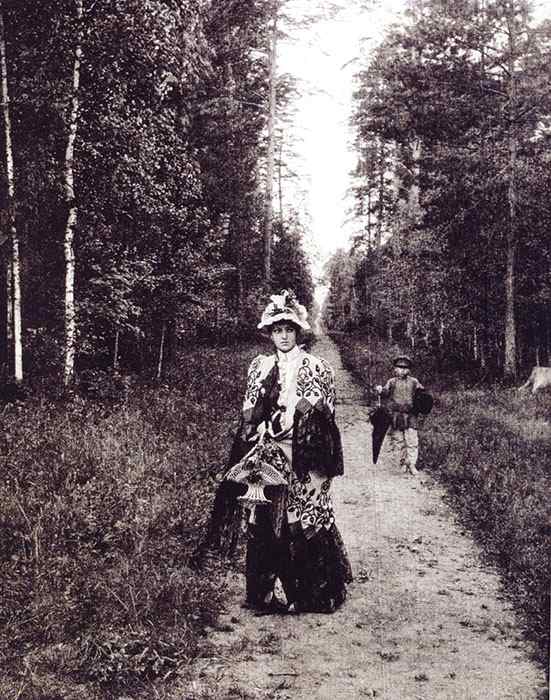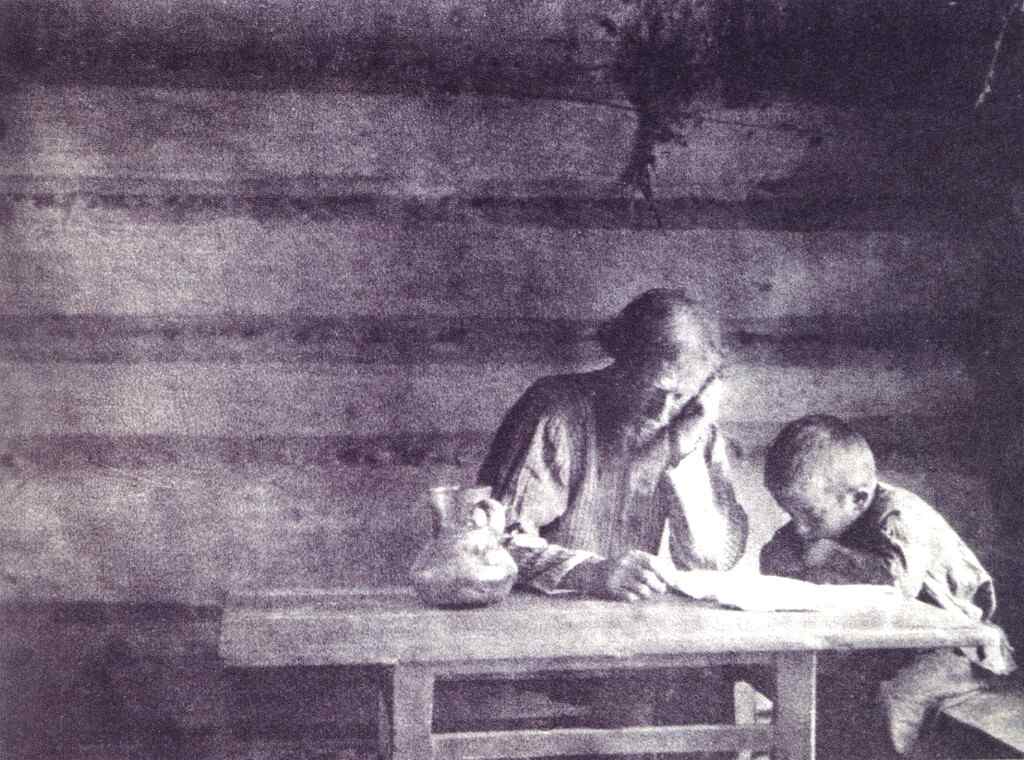Russian Photographic Society
Photos by Russian masters of the photographic society, are not only of museum quality, but also the interest to invest
Photography art began in 1839, when Paris was made the first daguerreotype. Russia immediately recognized and adopted a new invention, but an intense debate about how to craft, science or art is his attribute, accompanied him from the day of promulgation. By the end of the XIX century, a great demand for photographs contributed to the rapid development of photography in Russia - we get a photographic technique in different cities were created combining lovers of photography. In 1878, the Imperial Russian Technical Society created a special department "for its application and Photographs", which was engaged in photo exhibitions and published the magazine "Photographer", known to its leaders were Sergey Levitsky, Andrei Karelin and Sergey Prokudin-Gorsky. In 1894 a group of photographers, professionals and amateurs, was created Russian Photographic Society (RIF).
RFO purpose was the development of photography in all of Russia. In the 1894th company employs only 40 members in the following years their number exceeded one thousand. In the RFO was easy to start (only payment of membership fees and no requirements and obligations), but also withdraw from the company was just so part of it is constantly changing, but the influx of newcomers has always been. In a society were lifelong members and honorary members, elected for a three year term of the board and chairman. Financial expenses RFO covered by membership fees and private donations, the main item of expenditure was the cost of renting the room. In 1896 the first company was located in the Passage Popova at the Kuznetsk bridge, in 1920 - by Kropotkin Street (Prechistenka) at the State Academy of Artistic Sciences.
RFO to host a photographic competitions, exhibitions and the study of problems of artistic photography. At meetings have repeatedly raised the issue of the status of photography as a new art form. Photographers are also worried about the issue of copyright on the work started, they wanted to be on a par with the artists, doing creative work, and not the craft. The phrase "photographic craft" appeared and was fixed in 1850 when, in order to open a studio, photographers had to file a petition to the Moscow city council craft and get permission to "engage in the photographic profession." It is noteworthy that while fans were those who studied fine art photography, and the professionals were called those who worked in studios and halls, taking numerous portraits to order.
known member of the RFO were C . Prokudin-Gorsky, AO Karelin, SA Lobovikov, NA Petrov, A. Mazurin, MP Dmitriev, AI Trapani, NI Bobir and K . A. Fisher. After the October Revolution, the backbone of the society were photographers N. Andreev, D. Greenberg, P. Eremin, S. Ivanov-Alliluev, NI-Svishtov Paola, V. and P. Ulitin B. Klepikov.
In 1906 was published his own magazine company "Agenda RFO in Moscow" to announce the news in the world of photography and home affairs RFO all members of society, whose number early 1900 reached 1400, including non-resident. In 1908, "Agenda" transformed into "Bulletin of photographs", the journal began to pay attention not only to the technical side of photography, but also artistic.
In the 1900 RFO experienced difficulty in managing such a large number of members at meetings of the greater emphasis on administrative and economic matters, and not the problems of artistic photography. As a result of growing discontent in society, and many people left the RFO. In 1911, at an extraordinary meeting of the society was re-elected board of directors, co-editor and head of the art department, "Bulletin photos» Photographer appointed Nikolai Petrov. Petrov sent the artistic image in a different direction, considering that you need to educate the taste of the photographers in Russia and in the pages of the magazine to familiarize with the masterpieces of world art and photography. According to Petrov, the ideal of art photography should not be an exact reproduction of reality sought by many photographers and translating reality into artistic images. The aim of the magazine he saw photos of Russian search for a place in the photo world.
Petrov supporting any innovative movement, in particular the "fuzzy" pictorial photography. Conservatives were against the "ugly trend", considering the sharpness of the picture in the main. The magazine conducted a hot debate about the documentary and art photography. It has become a bone of contention, and in 1913, the board had to accept the division of the RFO trends in society: the minority - the supporters of artistic photography, the majority - the supporters of the recording (documentary) photography. But to accuse Petrova's commitment to art photography to the detriment of the documentary continued, and in 1914 he left the editor of "Bulletin».
During the First World War and the Revolution RFO temporarily suspended its activities. At the time, recording photo taken a leading place as needed clearer images for newspapers and magazines. After the Civil War, the RFO was restored. Among the members of the society appeared a clear distinction between the old school of Photographers and cameramen from the party orientation.
In the 1920s, photographers RFO, namely the art section, participated in international exhibitions - in London in 1922 -1925, in New York in 1923, in Paris in 1924-1925 - and received many awards.
In 1922, the State Academy of Artistic Sciences (GAKhN) took Russian Photographic Society under his wing. Together, they conducted a series of studies and exhibitions under the title "The Art of the movement." Photographers explored the movement in dance, sports, physical education. Interest in this subject has been associated with the visit to the USSR American dancer Isadora Duncan, and with its concept of free dance. The first exhibition, "Art of Movement" was held in 1925 under the auspices of GAKhN and was closed to the public since it was put up lots of pictures of nudes, which could cause the disapproval of some instances. The second exhibition was held in 1926, the third - in 1927, and the last, the fourth - in 1928. In the Soviet Union, even semi-nude photos of nature were seen with suspicion. Soon, the "Soviet photographic anthology" was published devastating article in which the participants of exhibitions "Art of Movement" have been announced of bourgeois influence and nude called "dingy relic of capitalist relations." This article and the subsequent shaft "critics" have led to the fact that in 1930 it was disbanded Russian Photographic Society, and has ceased to exist State Academy of Arts.
criticism and violent attacks were in the past, and the photos are masters of photography, including from the exhibition "Art of Movement", is proud to include in their collections museums and private collectors.
Andrei Osipovich Karelin (1837-1906) joined the Philosophical Society in 1895. He was not only a talented photographer, but also an artist, graduated from the St. Petersburg Academy of Arts. In 1860 he moved to Nizhny Novgorod, where he opened his shop. In 1870, together with the artist Karelin I. Shishkin created the album "Nizhny Novgorod". Basically Karelin shot kinds of Nizhny Novgorod and artistic portraits in his studio. He has received many awards in the field of photography, in 1878, he became a member of the French National Academy of Arts. In 2007, the auction Artcurial in Paris photos Karelin "Alms" bought for five and a half thousand euro.
 Andrei Karelin Alms. Around 1880
Andrei Karelin Alms. Around 1880
albumen print. 21.6 x 15
Artcurial (Paris). 16.05.2007. Lot 183
Estimate: 5 000-6 000
Result: 5,576 euros (7,558 dollars)
Source: artcurial.comAndrei Karelin From the" Art photo album with nature. " 1870 80th
State Historical Museum
Source: album "Russian photography. The middle of XIX - early XX century »
Comp. N. Rakhmanov. - Moscow: Planeta, 1996. S. 49
Photographer of the peasants Petr Petrovich Pavlov (1860 - not before 1924) was a member of the RFO's inception. He had his own Photo Workshops in Moscow, on the Butcher. Pavlov was shooting portraits, Moscow, scenes of urban life, as well as theatrical photography. He collaborated with the Moscow Art Theatre, widely known for his picture "Reading of" The Seagull "Anton Chekhov Moscow Art Theater actors" (1899). In the collection of the Museum of Literature stores 24 photos Pavlova with views of Moscow. In 2012, at the auction of the Russian auction house in Moscow picture Pavlova "The mechanism of the Kremlin chimes" bought for 120 thousand rubles.
| Peter Pavlov mechanism chimes of the Moscow Kremlin. 1890 gelatin-silver print, Vintage. 23 x 17,3 Russian Auction House (Moscow). 02.06.2012. Lot 9 Estimate: 000-180 120 000 Result: 120,000 rubles (3,552 dollars) Source: artinvestment.ru |  PETER Pavlov Reading of "The Seagull" Anton Chekhov Moscow Art Theater actors. May 7, 1899 State Literature Museum Source: album "Russian Photo Mid XIX - early XX century» Comp. N. Rakhmanov. - Moscow: Planeta, 1996. S. 169 |
In the 1900s Nikolai Petrov (1876-1940) was an important figure in photographic circles. Peter studied the photographic business in Germany, Karlsruhe, and then lived in Kiev, where he taught at various institutions photos, successfully participated in the exhibitions, and founded the Kiev association and amateur photographers "Daguerre". Since 1906 he has been a member of the RFO-town. In 1911-1914 headed the art department of the magazine "Journal of Photography", which was researching the domestic and foreign photography. In 2008, at the Bonhams auction in London for a photo Petrov 'Homeless' paid 1,320 pounds.
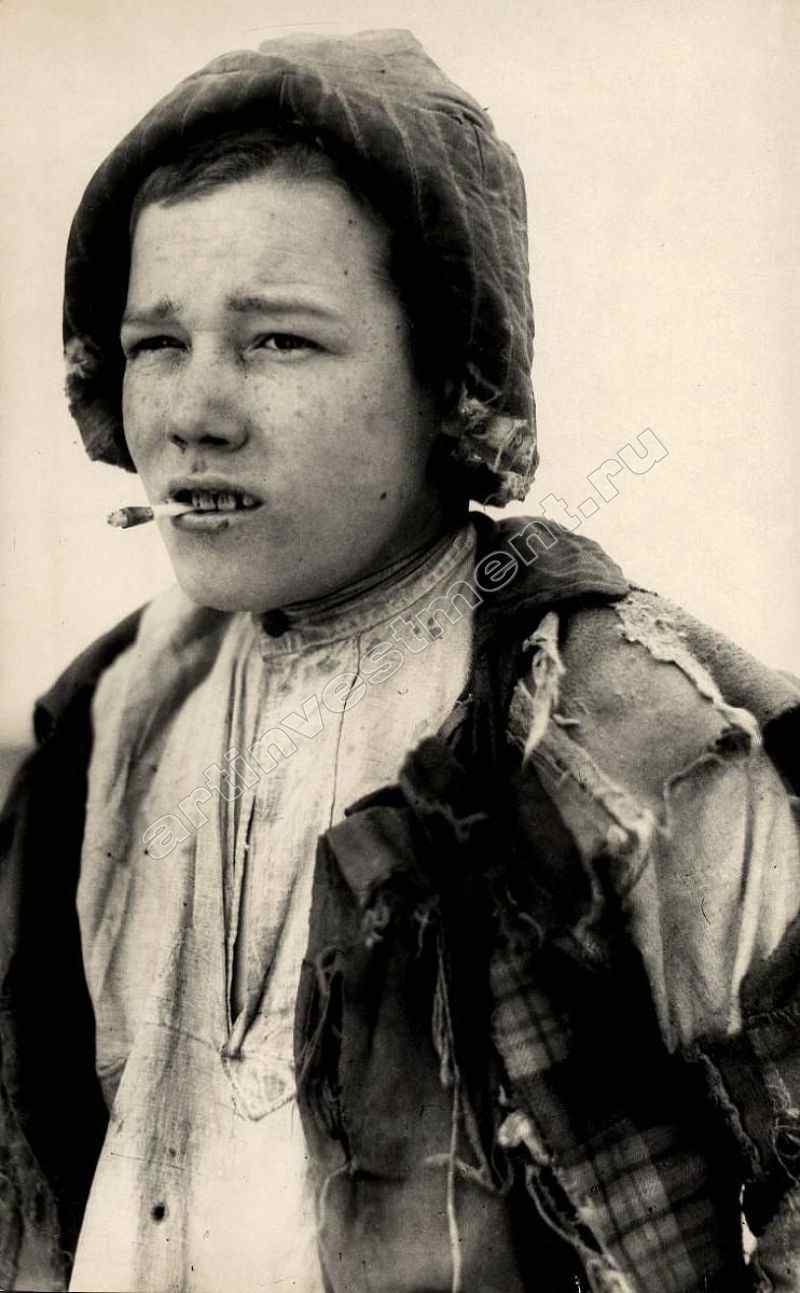 Nikolai Petrov Homeless. 1920 gelatin-silver print. 28 x 17,5 Bonhams. London. 10.06.2008. Lot 10 Result: 1,320 pounds (2,579 dollars) Source: artinvestment.ru | 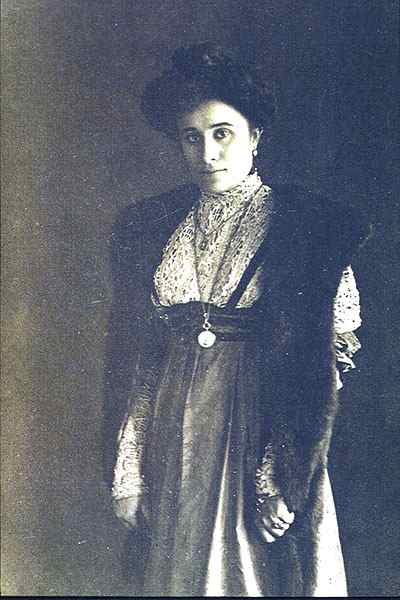 Nikolai Petrov . M. Turchaninova. 1900s State Historical Museum Source: album "Russian photography. The middle of XIX - early XX century » Comp. N. Rakhmanov. - Moscow: Planeta, 1996. S. 66 |
Photographer Maxim Dmitriev (1858-1948 ) attended the workshop Karelin in Nizhny Novgorod. In 1887 he opened his shop. Dmitriev shot types and Volga Nizhny Novgorod, urban landscapes and scenes of village life. Dmitriev was a member of the RFO from its inception. He was a photographer, documentary, shot in a journalistic genre pictures: in 1891-1892 helped the starving Volga region, has created a series of documentary photographs of villages "bad year 1891-1892", took a series of "Old Believers skit", "collection of types and life of the peoples of Russia." In 1992, the former Nizhny Novgorod opened a shop Dmitriev Russian Museum of Photography. In 2010 and 2012, the photographs Dmitrieva with views of Nizhny Novgorod offered for sale by auction house Binoche et Giquello (Paris) with an estimate of 700-750 euros (about 1 thousand dollars), but the buyer is not found.
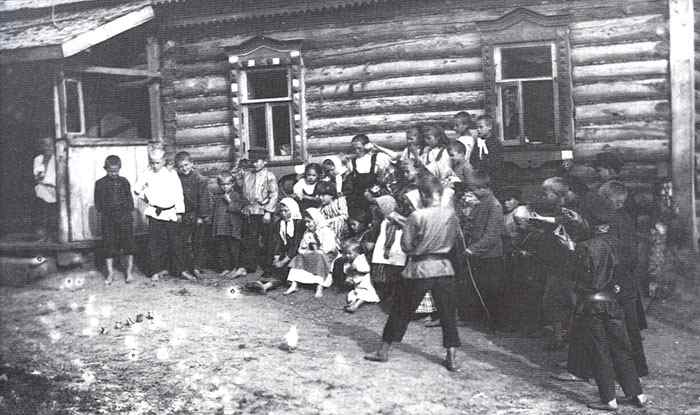 Maxim Dmitriev knuckles in the village. 1890 Russian Archive of Films Source: album "Russian Photo Mid XIX - early XX century» Comp. N. Rakhmanov. - Moscow: Planeta, 1996. S. 85 | Sergei Prokudin-Gorsky peasant girl. Russian Empire. 1909 triple negative. 24 x 9 Library of Congress in Washington. Number 21043 Source: loc.gov /index.html |
photographer Sergei Mikhailovich Prokudin-Gorsky (1863-1944) acquired international fame thanks to color photographs of pre-revolutionary Russia, created a special method of triple exposure. Prokudin-Gorsky invented sensitizer for photographic plates sensitive to the entire color spectrum, he was the editor of the magazine "Amateur Photographer". In 1906 he was elected an honorary member of the RFO. In 1909, Prokudin-Gorsky began to address daunting task - to capture color images on all of modern Russia. He has traveled all over the country from Murmansk to Samarkand, shooting people, villages, churches and landscapes. After the revolution, the photographer had emigrated to France, his collection of photographs remained in Russia. Probably in 1931, his collection of photographs of tsarist Russia, consisting of 2300 triple negatives, was secretly moved from the USSR to France. In 1948, the heirs sold the collection of the photographer Library of Congress, but it had only 1,902 of triple negative, the fate of the remaining 400 negatives is unknown. In 1991, was compiled computer database snapshots Prokudin-Gorsky. Information on the whereabouts of the other works of Prokudin-Gorsky - in private collections or museums - or when new auction sites there.
| Sergey Prokudin-Gorsky General view of the New Ufa. 1910 triple negative. 24 x 9 Library of Congress in Washington. Number 20554 Source: loc.gov /index.html | 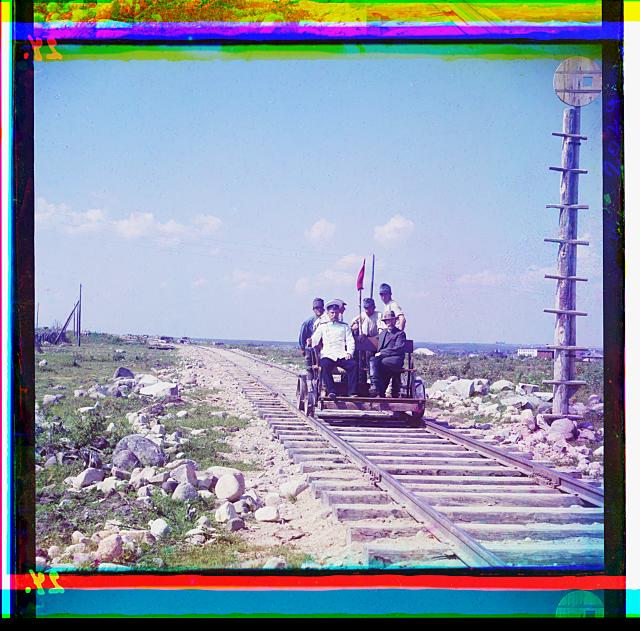 Sergey Prokudin-Gorsky on a trolley in Petrozavodsk on Muromsk rail. 1915 triple negative. 24 x 9 Library of Congress in Washington. Number 20245 Source: loc.gov /index.html |
artistic heritage of many photographers RFO is rare in the auction or in private galleries - to find their work can only be rare in museum collections. Alex S. Mazurin (1846 - after 1915) started out as an amateur photographer, but managed to achieve international fame. Mazurin filmed romantic landscapes and peasant life, was a founding member of the RFO, and since 1899 - an honorary member.
Carl A. Fisher (1859 - after 1923 ) Prussian citizen, owned a shop in Moscow, at the Kuznetsk bridge, was a member of the Philosophical Society since its founding in 1898-1907 - its chairman, and from 1907 - an honorary member. Fisher shot portraits of famous writers, artists, composers, artists, engaged in architectural and theatrical photography.
| KARL FISCHER Mary of Scotland. The Golden Age of Russian theater. Portraits starring Mary Stuart - Mary Ermolova. 1892 The Theater Museum. Bakhrushin Source: gctm.ru | 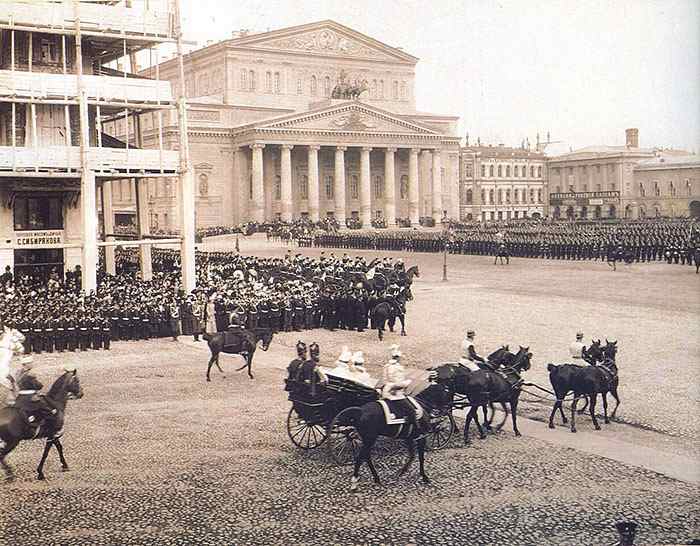 KARL FISCHER King's crew at Theater Square during the military parade. From the album "A visit to the royal family of Moscow." April 1910 Russian Archive of Films Source: album "Russian Photo Mid XIX - early XX century» Comp. N. Rakhmanov. - Moscow: Planeta, 1996. Pp. 102 |
Photoartist Sergey Lobovikov (1870-1941) organized Vyatskoe Photographic Society, from 1900 a member of the Philosophical Society, 1913 - honorary member. Lobovikov participated in international competitions and exhibitions of art photography. In 1927, held a solo exhibition of the photographer under the auspices of the RFO in Moscow.
Anatoly Trapani (1881 - after 1930) graduated from the Moscow School of Painting, Sculpture and architecture, with a photo worked in the engineering and multicolor fotooforta bromoil. From 1910 he was a member of the Philosophical Society, and since 1912 - member of the board of the company. Trapani is one of the first to shoot nudes. In 1917/1918 he emigrated to France in 1928 he moved to the United States, worked as a cameraman.
works of one of the most famous Russian photographers, Aleksandrov Greenberg (1885-1979), one of the twenty most expensive Russian photographs. Greenberg - a talented pictorialists, erotic follower pictures, which is why he was arrested in 1936 and accused of spreading pornography. Greenberg was a member of the RFO since 1906. auction site to buy his photographs in the range of 2 to 4 thousand dollars. in 2010 at auction Binoche Renaud Giquello ( Paris) for the photograph in the nude to pay 22,000 euros, the lower estimate was exceeded by a factor of 7.
| Alexander Grinberg nude, sketch II. Around 1930 gelatin-silver print, vintage. 12.3 x 12 Binoche Renaud Giquello. Paris. 18.11.2010. Lot 146 Estimate: 3 000-3 500 euros Result: 22,000 euros (29,713 dollars) Source: binoche-renaud-giquello.com | Alexander Grinberg nude, sketch I, Moscow. Around 1930 gelatin-silver print, vintage. 11,4 x 7,4 Binoche Renaud Giquello. Paris. 18.11.2010. Lot 145 Estimate: 3 000-3 500 euros Result : 6,100 euros (8,238 dollars) Source: binoche-renaud- giquello.com |
Photographer Yury Eremin (1881-1948) became famous thanks to photographs of monuments of Moscow, as well as the types of Crimea, Moscow and Moscow region, pictures of nudes. Eryomin joined the SFA in 1910, in 1916 he became a member of the Board. in 1918 Eryomin opened his shop "Secession" in Moscow. He took part in all four of the exhibitions "Art of Movement". Emphasis Eryomin gave light. Photo "Gursuf" has collected many awards: branch in the foreground gave the depth image; this method was used for the first time, went on to become a sort of punch for photographers and even got the name "ereminskaya branch." In 2010, the auction Binoche Renaud Giquello (Paris) photo Eremina "Big House" bought for 5200 euros.
| YURI EREMIN Bolshoi Theatre, Moscow. 1928 gelatin silver print, vintage. 7,8 x 5,4 Binoche Renaud Giquello. Paris. 18.11.2010. Lot 158 Estimate: 1 800-2 000 Result: 5,200 euros (7,023 dollars ) Source: binoche-renaud-giquello.com | YURI EREMIN architectural ensemble at the Cathedral of Christ. 1920 bromine-silver print. 28,6 x 38,6 State Historical Museum Source: catalog of the exhibition "Pictorial Photography in Russia 1890 1920." - M.: Art Spring, 2002. Cat. № 26 |
| YURI EREMIN . Gursuf. 1925 Source: fotay.ru |
Rakhmanov Nikolai Andreev (1882-1947) was engaged in painting and Photographs. In the 1900s he opened his shop in Serpukhov, shooting landscapes and genre scenes . His pictorial photographs have been widely recognized in Russia and abroad. fruitful "golden age" of creativity Andreeva years 1922-1928 are considered. in 2010 for a photo Andreeva "Russian Landscape" paid two thousand euros at auction Binoche Renaud Giquello (Paris).
| Nikolai Andreyev Russian landscape. Around 1930 gelatin-silver print, vintage. 18 x 22,5 Binoche Renaud Giquello. Paris. 18.11.2010. Lot 165 Estimate: 2 500-3 000 Result: 2,000 euros (2,701 dollars) Source: binoche-renaud-giquello.com | Nikolai Andreyev comes to the boil. Bromoil 1924 with the transfer. 38 x 28 Russian Union of Art Photographers Source: catalog of the exhibition "Pictorial Photography in Russia 1890-1920-ies." - M.: Art Spring, 2002. Cat. № 5 |
out of the RFO group of talented pictorialists, one of which was the Nikolai Svishtov Paola (1874-1964). Photographer became a member of the Philosophical Society in 1906, from 1911 to 1930 he was a member of the government. In 1908, photographer Svishtov bought a shop, "Paola", later called unexpectedly caught on and became part of his family. Fame Svishtov-Paola brought expressive portraits, landscapes, genre scenes and pictures of nudes made for the exhibitions "Art movement." Portrait artist V. Meshkov Russian auction house estimated at 60-80 thousand rubles at the auction in Moscow in 2012, but the buyer is not found.
| NICHOLAS Fistulas Paolo Portrait of the Artist VM . Meshkov. 1930 gelatin-silver print. 19,7 x 14,5 Russian auction house. 02.06.2012. Lot 10 Estimate: 60 000-80 000 (2 496-3 328 dollars) Source: artinvestment.ru | NICHOLAS Fistulas Paolo Shepherd. Prior to 1917 Russian archive Film and Photo Source: album "Russian Photo Mid XIX - early XX century» Comp. N. Rakhmanov. - Moscow: Planeta, 1996. pp. 142 |
Among the talented photographers RFO was also Leonid Shokin (1896-1962). He lived all his life in Kimry, created Cymric branch RFO, a member of which was in 1918. Shokina Two photos with landscapes exhibited at the auction auction houses Symposion Auction House in Prague in 2000 and Tajan in Paris in 1995 and were bought for 520 and 792 dollars respectively.
| LEONID Shokin flag. 1920s bromine-silver print. 26 x 19 Private Collection Source: catalog of the exhibition "Pictorial Photography in Russia 1890 1920." - M.: Art Spring, 2002. Cat. № 75 | LEONID Shokin fortune teller. Around 1924 Modern imprint Collection MI Golosovsky Source: photographer.ru |
works of some photographers RFO has not exhibited at a public auction, but they are museum quality. Sergey Kuzmich Ivanov-Alliluev (1891-1979) joined the SFA in 1920, filmed lyrical landscapes, portraits, and after World War II he worked in the TASS news in pictures.
Vasily Ulitin (1888-1976) took up photography in the studio of Charles Fisher in 1923 was a member of the RFO. In 1942 pictorialists Ulitin was accused of slandering the Soviet regime and sent to the camp for ten years , in 1950 the photographer rehabilitated.
Petr Klepikov (1884-1960) was amateur photographer, then became a specialist in aerial photography in the RFO came in the early 1920s. Klepikov shooting architecture, has made some trips to the Crimea and the Russian North.
| PETER KLEPIKOV . Winter sketch. 1923 Museum" Moscow House of Photography " Source: mamm-mdf.ru |
Many photographers RFO gained world renown and their works are not only of museum quality, but also the interest to invest. Photos of the RFO collected by collectors Mikhail Golosovsky, Evsej Samoylovich Bialy. RFO Pictures are also in the museum collections of the State Historical Museum, the State Literary Museum, the Russian Film and Photo Archive, the State Central Theater Museum. Bakhrushin, in the meeting of the Union of Photographers of Russia and the U.S. Library of Congress in Washington, DC.
Marina Bondarenko, AI
Sources:
1. VT Stigneev. century photographs 1894-1994: Essays on the history of Russian photography. - M.: Publishing house «Librokom", 2009.
2. Shipova TN. Photographers of Moscow (1839-1930): A Biographical Dictionary catalog. - M: Coincidence, 2006.
Permanent link to:
https://artinvestment.ru/en/invest/ideas/20130603_rph.html
https://artinvestment.ru/invest/ideas/20130603_rph.html
© artinvestment.ru, 2025
Attention! All materials of the site and database of auction results ARTinvestment.RU, including illustrated reference information about the works sold at auctions, are intended for use exclusively for informational, scientific, educational and cultural purposes in accordance with Art. 1274 of the Civil Code. Use for commercial purposes or in violation of the rules established by the Civil Code of the Russian Federation is not allowed. ARTinvestment.RU is not responsible for the content of materials submitted by third parties. In case of violation of the rights of third parties, the site administration reserves the right to remove them from the site and from the database on the basis of an application from an authorized body.

